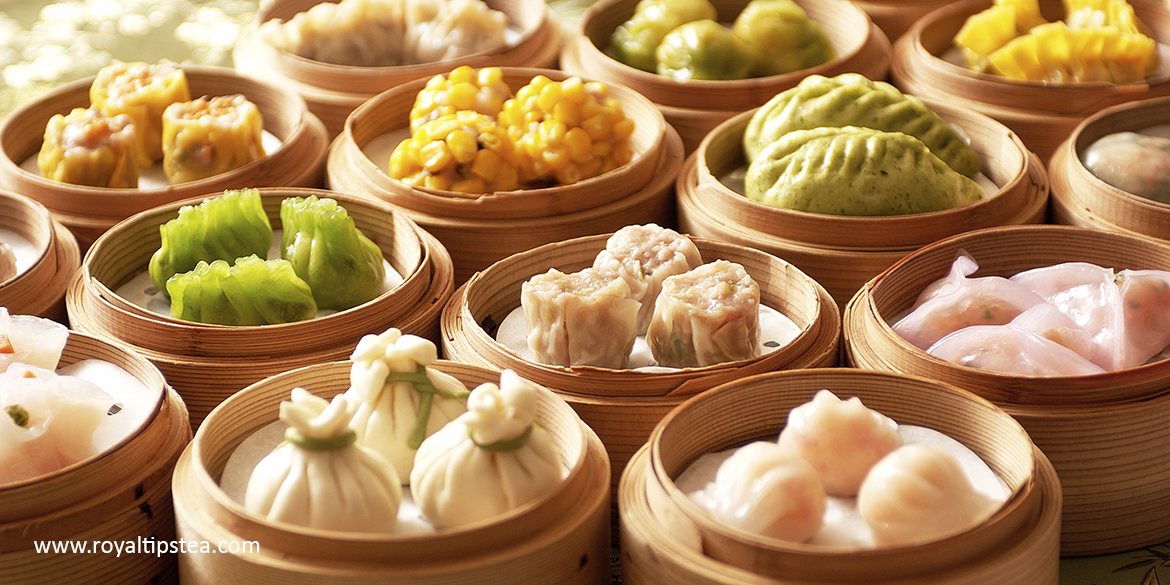How to pair tea with food – basic steps
Although there are guidelines to help us plan tea and food pairings, it is essential to try the tea and food together to assess each pair individually. It is sometimes really surprising what work and what doesn’t. The general rule is to match strong food with strong teas, light food with light teas, smoky foods with smoky teas, fruity foods with fruity teas, etc. But it’s not quite as simple as that.
The best way to work is to start by choosing a particular food – for example different cheeses, different chocolates, different fruits, different styles of cake, etc. and taste them with three or four different teas.
Prepare a chart to help you keep notes and always write down your reaction, your likes and dislikes as you taste, so that you gradually build a record of the different pairings.
Pairing tea with cheese
Start, perhaps, with cheese. Select a strong cheese, a mild cheese, a creamy cheese and a blue cheese and taste with a green tea, a jade oolong, a strong black tea such as Ceylon, and with a lighter black such as First Flush Darjeeling. Prepare the first tea and taste with each of the four cheeses. When you taste, take a mouthful of tea, then take a small bite of the first food, then take another mouthful of tea and decide if the tea tastes better or worse with this food and if the food tastes better or worse with this tea. Make notes. Next, prepare the second tea and repeat the tasting with the four cheeses. Repeat with the other four teas.
For the pairing to work, the tea and food should enhance each other rather than drown the flavours out, or make the taste of one or both unpleasant or disappointing.
Afternoon tea pairings
If enjoying afternoon tea, the first savoury course will pair well with different teas from those that go well with the cakes and desserts so switch teas with each part of the meal. Ceylon tea is an excellent match for fruit cakes, carrot cake, gingerbread, lemon cake, and scones with jam and cream. Dark oolongs, Darjeeling Second Flush, Keemun and Russian Caravan are good with nuts and spices. And try balancing the naturally complex flavours of earthy cooked Pu-erhs and rock oolongs with dark chocolate.
General guidelines on tea and food pairing
Here are some parings that may work well, but it is important to try them for yourself since in each case, the flavours of the individual teas and foods may vary. Any sauces added to sweet and savoury dishes, and the method of preparation will of course also affect the way in which the pairings work.
Dark red meats such as beef and lamb may pair well with a smoky Lapsang Souchong, or with strong black teas such as Yunnan black, Keemun, Assam, or Ceylon.
Grilled and BBQ meats – with their slightly smoky or charred flavours – may go well with dark oolongs such as Wuyi oolong, or rich malty low grown Ceylons from Galle, or with stronger Yunnan blacks.
Light fish dishes and seafood are complemented by greener oolongs and green teas, so try pairing with Taiwanese Ali Shan or Li Shan balled oolongs, or with the sweet, grassy flavours of Japanese sencha, karigane, or kukicha.
Egg mayonnaise sandwiches, cream cheese, cucumber sandwiches on white bread, and green salads pair well with lighter teas such as First Flush Darjeeling, first flush Nepali teas, or with mild sooth Chinese greens such as Mao Jian or Anji Bai Cha.
Dim sum filled with shrimps or pork are quite fatty so pair them and other oily and fatty foods with earthy ripened Pu-erh teas which cut through the fatty taste and texture.
Teas that pair well with fruits, depending on the acidity and strength of the flavour, are white teas, mellow sweet green teas, such as Long Jing or Mao Feng, lightly oxidised jade oolongs, Bao Zhongs, and First Flush Darjeelings. Try peaches, apricots, grapes raspberries, strawberries, apples, and blackcurrants with Darjeeling white or Ti Kuan Yin oolong. And Earl Grey pairs well with creamy puddings and cakes or citrus flavoured desserts.
The possibilities are infinite and the tasting process reveals all sorts of unexpected pleasures. If you find a particular pairing really doesn’t work, just move on and try and different combination. You will be amazed how much fun this exercise can be and how many surprises are in store for you as you really concentrate on how the different pairs affect your enjoyment of the different teas and foods.

